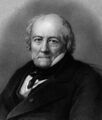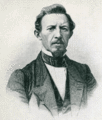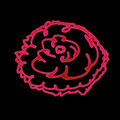Template:Selected anniversaries/February 3: Difference between revisions
No edit summary |
No edit summary |
||
| Line 18: | Line 18: | ||
||1811: Johann Beckmann dies ... scientific author and coiner of the word technology, to mean the science of trades. He was the first man to teach technology and write about it as an academic subject | ||1811: Johann Beckmann dies ... scientific author and coiner of the word technology, to mean the science of trades. He was the first man to teach technology and write about it as an academic subject | ||
||1821 | ||1821: Elizabeth Blackwell born ... physician and educator. | ||
||Ogden Nicholas Rood | ||1831: Ogden Nicholas Rood born ... physicist best known for his work in color theory. Pic. | ||
||1859 | ||1859: Hugo Junkers born ... engineer, designed the Junkers J 1. | ||
File:Jean Baptiste Biot.jpg|link=Jean-Baptiste Biot (nonfiction)|1862: Physicist, astronomer, and mathematician [[Jean-Baptiste Biot (nonfiction)|Jean-Baptiste Biot]] dies. He established the reality of meteorites, made an early balloon flight, and studied the polarization of light. | File:Jean Baptiste Biot.jpg|link=Jean-Baptiste Biot (nonfiction)|1862: Physicist, astronomer, and mathematician [[Jean-Baptiste Biot (nonfiction)|Jean-Baptiste Biot]] dies. He established the reality of meteorites, made an early balloon flight, and studied the polarization of light. | ||
| Line 44: | Line 44: | ||
||1909: Simone Weil born ... mystic and philosopher. | ||1909: Simone Weil born ... mystic and philosopher. | ||
||Francis Joseph Murray | ||1911: Francis Joseph Murray born ... mathematician, known for his foundational work (with John von Neumann) on functional analysis, and what subsequently became known as von Neumann algebras. | ||
||Georgi Evgen'evich Shilov | ||1917: Georgi Evgen'evich Shilov born ... Soviet mathematician and expert in the field of functional analysis, who contributed to the theory of normed rings and generalized functions. Pic. | ||
||Marion Franklin Tinsley | ||1927: Marion Franklin Tinsley born ... mathematician and checkers player. He is considered to be the greatest checkers player who ever lived. Pic (nice). | ||
File:Agner Krarup Erlang.jpg|link=Agner Krarup Erlang (nonfiction)|1929: Mathematician and engineer [[Agner Krarup Erlang (nonfiction)|Agner Krarup Erlang]] dies. He invented the fields of traffic engineering, queueing theory, and telephone networks analysis. | File:Agner Krarup Erlang.jpg|link=Agner Krarup Erlang (nonfiction)|1929: Mathematician and engineer [[Agner Krarup Erlang (nonfiction)|Agner Krarup Erlang]] dies. He invented the fields of traffic engineering, queueing theory, and telephone networks analysis. | ||
||1935 | ||1935: Hugo Junkers dies ... engineer, designed the Junkers J 1. | ||
||1956 | ||1956: Émile Borel dies ... mathematician and academic. | ||
File:Cantor Parabola and Gnotilus at Athens.jpg|link=Cantor Parabola and Gnotilus at Athens|1959: ''[[Cantor Parabola and Gnotilus at Athens]]'' hailed as "a triumph of art and crime-fighting." | File:Cantor Parabola and Gnotilus at Athens.jpg|link=Cantor Parabola and Gnotilus at Athens|1959: ''[[Cantor Parabola and Gnotilus at Athens]]'' hailed as "a triumph of art and crime-fighting." | ||
| Line 62: | Line 62: | ||
File:William_D._Coolidge.jpg|link=William D. Coolidge (nonfiction)|1975: Physicist and engineer [[William D. Coolidge (nonfiction)|William D. Coolidge]] dies. He made major contributions to X-ray machines, and developed ductile tungsten for incandescent light bulbs. | File:William_D._Coolidge.jpg|link=William D. Coolidge (nonfiction)|1975: Physicist and engineer [[William D. Coolidge (nonfiction)|William D. Coolidge]] dies. He made major contributions to X-ray machines, and developed ductile tungsten for incandescent light bulbs. | ||
||1985 | ||1985: Frank Oppenheimer dies ... physicist and academic. | ||
||Natascha Artin Brunswick | ||2004: Natascha Artin Brunswick dies ... mathematician and photographer. Pic. | ||
||2005 | ||2005: Ernst Mayr dies ... biologist and ornithologist ... taxonomy, speciation. | ||
||2007: Thomas Christian Sneum dies ... Danish pilot. He collected information about the German Freya radar that had been installed on his home island in Denmark. On the night of 21–22 June 1941 he and pilot Kjeld Pedersen made a spectacular escape from Denmark to Great Britain in a D.H. Hornet Moth. Pic: https://alchetron.com/Thomas-Sneum | |||
File:Crimson Blossom.jpg|link=Crimson Blossom (nonfiction)|2017: ''[[Crimson Blossom (nonfiction)|Crimson Blossom]]'' voted Picture of the Day by the citizens of [[New Minneapolis, Canada]]. | File:Crimson Blossom.jpg|link=Crimson Blossom (nonfiction)|2017: ''[[Crimson Blossom (nonfiction)|Crimson Blossom]]'' voted Picture of the Day by the citizens of [[New Minneapolis, Canada]]. | ||
</gallery> | </gallery> | ||
Revision as of 05:47, 11 October 2018
1468: Blacksmith, goldsmith, inventor, and publisher Johannes Gutenberg dies.
1581: Mathematician and physicist Thomas Fincke develops new class of Gnomon algorithm functions based on tangents and secants.
1767: Priest, mathematician, and astronomer Giuseppe Piazzi uses scrying engine to pre-visualize the dwarf planet Ceres.
1862: Physicist, astronomer, and mathematician Jean-Baptiste Biot dies. He established the reality of meteorites, made an early balloon flight, and studied the polarization of light.
1863: Inventor and engineer Wilhelm Bauer uses Gnomon algorithm functions to power new type of submarine, capable of remaining submerged as long as computation is maintained.
1893: Mathematician Gaston Maurice Julia born. He will devise the formula for the Julia set.
1929: Mathematician and engineer Agner Krarup Erlang dies. He invented the fields of traffic engineering, queueing theory, and telephone networks analysis.
1959: Cantor Parabola and Gnotilus at Athens hailed as "a triumph of art and crime-fighting."
1961: The United States Air Forces begins Operation Looking Glass, and over the next 30 years, a "Doomsday Plane" is always in the air, with the capability of taking direct control of the United States' bombers and missiles in the event of the destruction of the SAC's command post.
1975: Physicist and engineer William D. Coolidge dies. He made major contributions to X-ray machines, and developed ductile tungsten for incandescent light bulbs.
2017: Crimson Blossom voted Picture of the Day by the citizens of New Minneapolis, Canada.










